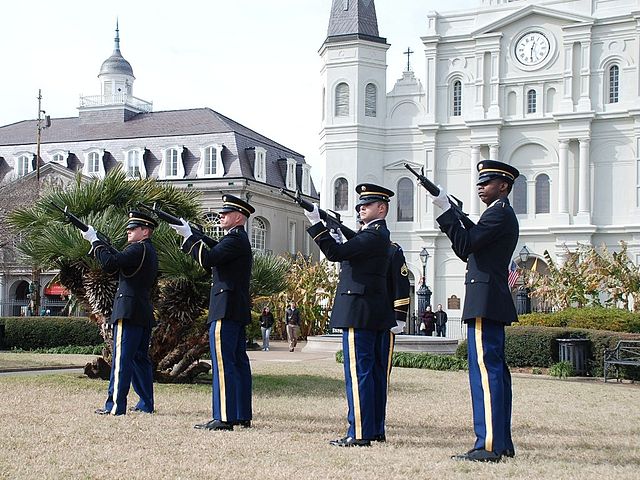The Louisiana National Guard is the armed force through which the Louisiana Military Department executes the U.S. state of Louisiana's security policy. Consisting of the Louisiana Army National Guard, a reserve component of the United States Army; the Louisiana Air National Guard, a reserve component of the United States Air Force; and the Louisiana State Guard, an all-volunteer state defense force, it is directed by an adjutant general appointed by the Governor of Louisiana unless federalized by order of the President of the United States, which places members on active U.S. military duty status.
Louisiana National Guardsmen evacuating citizens from Port Sulphur
Louisiana National Guardsmen from the Honor Guard team fire their rifles to commemorate the Battle of New Orleans during a ceremony in Jackson Square, New Orleans, January 8, 2010, at an event sponsored by the U.S. Daughters of 1812
Louisiana Army National Guard
The Louisiana Army National Guard is a component of the Louisiana National Guard, and the state's reserve force within the United States Army. The Constitution of the United States specifically charges the National Guard with dual federal and state missions. When not federalized, the National Guard is the only United States military force empowered to function in a state status. Those functions range from limited actions during non-emergency situations to full scale law enforcement of martial law when local law enforcement officials can no longer maintain civil control. The Louisiana Army National Guard may be called into federal service in response to a call by the President or U.S. Congress.
Louisiana Army National Guard vehicles preparing for Hurricane Gustav



